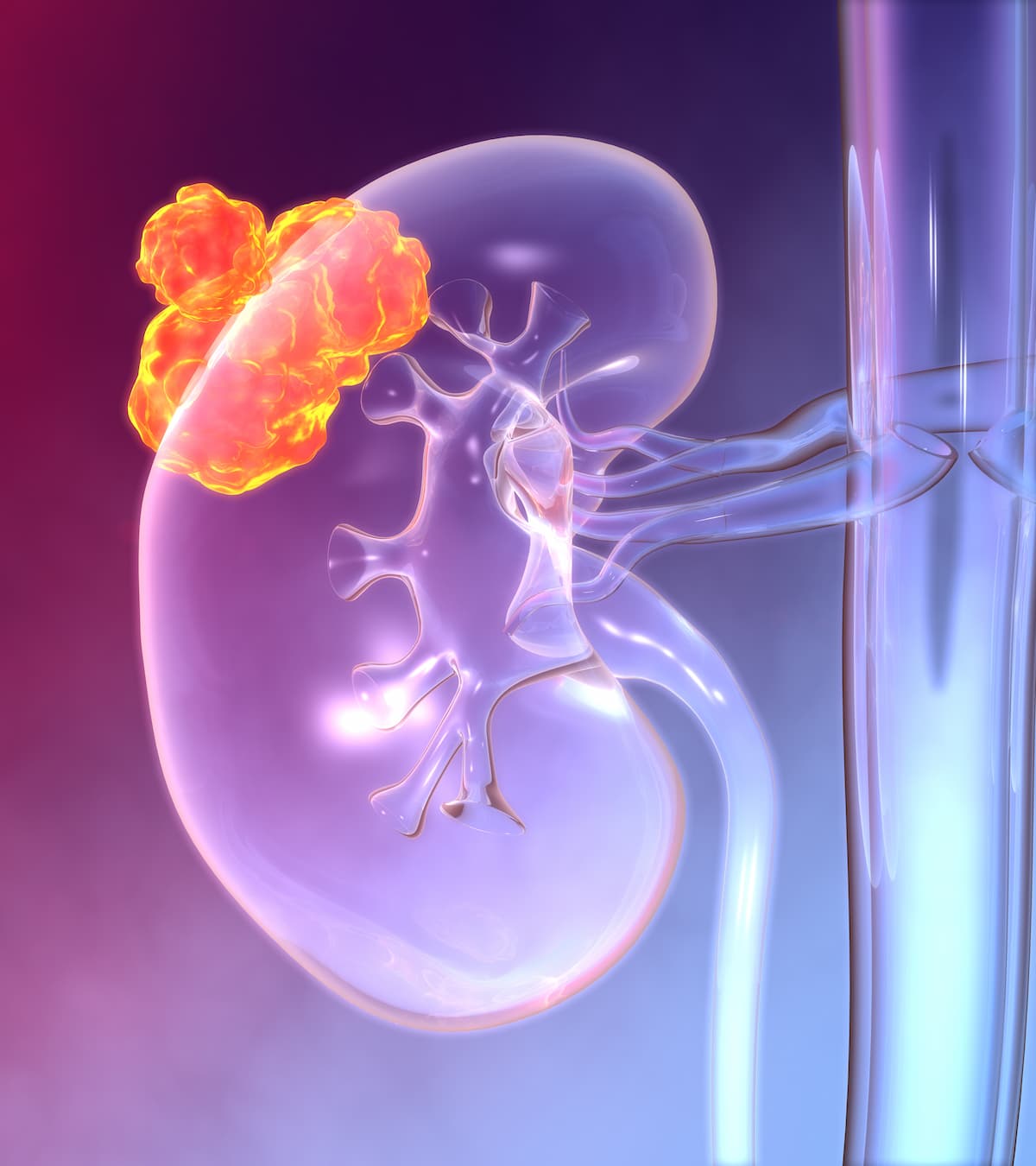Developer Submits BLA for TLX250-CDx Kidney Cancer Imaging in ccRCC
TLX250-CDx elicited a mean sensitivity of 85.5% and a mean specificity of 87.0% in patients with indeterminate renal masses in the phase 3 ZIRCON trial.
TLX250-CDx elicited a mean sensitivity of 85.5% and a mean specificity of 87.0% in patients with indeterminate renal masses in the phase 3 ZIRCON trial.

A biologics license application (BLA) has been submitted to the FDA for the use of TLX250-CDx (Zircaix; 89Zr-girentuximab) kidney cancer imaging, an investigational positron emission tomography (PET) drug product for the non-invasive diagnosis and characterization of clear cell renal cell carcinoma (ccRCC), according to a news release from the developer, Telix.1
TLX250-CDx would be the first and only targeted PET agent designed for use in kidney cancer to become commercially available in the US, if approved. Also, the FDA will advise the Prescription Drug User Fee Act date after a 60-day administrative review of the BLA.
In July 2020, the imaging product received breakthrough therapy designation.2
Supporting data for the BLA come from the open-label, multi-center phase 3 ZIRCON trial (NCT03849118) evaluating the sensitivity and specificity of TLX250-CDx’s ability to identify ccRCC in adult patients with indeterminate renal masses (IRM).
“[TLX250-CDx] PET-CT imaging accurately identified [ccRCC] in patients with a cT1 [IRM of 7 cm or less], with a favorable safety profile,” lead ZIRCON study author Brian M. Shuch, MD, director of the Kidney Cancer Program and the Alvin and Carrie Meinhardt Endowed Chair in Kidney Cancer Research at UCLA Health, wrote in a paper published in Lancet Oncology.3 “These results establish the value of [TLX250-CDx] PET-CT imaging as a new standard, non-invasive tool for the diagnosis and detection, characterization, and differentiation of ccRCCfrom other renal and extrarenal lesions in clinical practice, minimizing the risk of unnecessary invasive interventions.”
The imaging product demonstrated a mean sensitivity of 85.5% (95% CI, 81.5%-89.6%) and a mean specificity of 87.0% (95% CI, 81.0%-93.1%). Per blinded central review conducted by 3 independent readers, the mean positive predictive value was 92.9% (95% CI, 90.2%-95.7%).
Regarding safety, the majority of adverse events (AEs) occurred during or after surgery (74%), hence AEs were judged as unlikely to be related to TLX250-CDx. Of grade 3 or higher toxicities, the most common AEs were post-procedural hemorrhage (2%), urinary retention (1%), and hypertension (1%). A total of 52 serious AEs, 51 (98%) of which occurred after surgery, were reported in 25 of 300 patients. No treatment-related deaths occurred.
The trial’s coprimary end points were the sensitivity and specificity of TLX250-CDx PET-CT imaging to non-invasively detect ccRCC in patients with cT1 IRMs of 7 cm or smaller who underwent partial or radical nephrectomy. Sensitivity was defined as the proportion of patients who had a true-positive TLX250-CDx PET-CT scan relative to those with a positive ccRCC histopathological diagnosis. Specificity was defined as the proportion of patients who had a true-negative TLX250-CDx PET-CT scan relative to those with a negative histopathological diagnosis.
Secondary end points included positive predictive value, negative predictive value, and accuracy of TLX250-CDx PET-CT imaging in patients with a cT1 indeterminate renal mass and patients with a cT1a indeterminate renal mass.
A total of 332 patients were enrolled in the trial, 300 patients were given TLX250-CDx (median age, 61; SD, 12), and 284 were included in the primary analysis. Patients were administered a single dose of TLX250-CDx (37 MBq plus or minus 10%; 10 mg girentuximab) over a minimum of 3 minutes on day 0, then underwent abdominal PET-CT imaging on day 5 (plus or minus 2 days). At the discretion of the imager, PET-CT imaging could be expanded to the whole body.
Patients were required to be 18 years or older; have evidence of a single, localized indeterminate renal mass of 7 cm or smaller in the largest diameter that was suspicious for RCC; negative serum pregnancy tests in female patients of childbearing potential, and sufficient life expectancy to justify nephrectomy.4
Patients were excluded from participation if they had a renal mass known to be metastasis of another primary tumor; bioptic procedure planned for histological species delineation of IRM; active non-renal malignancy requiring therapy during the time frame of the study participation; and chemotherapy, radiotherapy, or immunotherapy within 5 weeks prior to administration of the trial product.
References
- Telix files TLX250-CDx (Zircaix®) BLA for kidney cancer imaging. News release. Telix. December 30, 2024. Accessed January 3, 2025. https://tinyurl.com/mtdcuncb
- Telix granted FDA Breakthrough Therapy Designation for renal cancer imaging product. News release. Telix. July 1, 2020. Accessed January 3, 2025. https://tinyurl.com/6abshsrt
- Shuch B, Pantuck AJ, Bernhard JC, et al. [89Zr]Zr-girentuximab for PET-CT imaging of clear-cell renal cell carcinoma: a prospective, open-label, multicentre, phase 3 trial. Lancet Oncol. 2024;25(10):1277-1287. doi:10.1016/S1470-2045(24)00402-9
- 89Zr-TLX250 for PET/CT imaging of ccRCC- ZIRCON study (89ZR-TLX250). ClinicalTrials.gov. Updated May 17, 2024. Accessed January 3, 2025. https://tinyurl.com/mv76ksw6